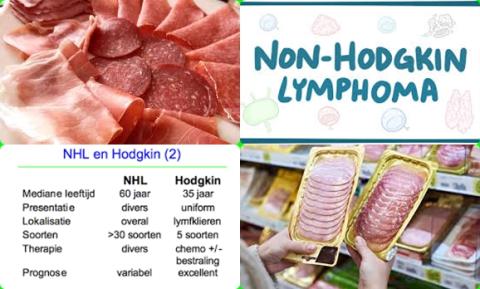
Objectives:
Epidemiologic studies of the relationship between nitrite or nitrate consumption and risk of non-Hodgkin lymphoma (NHL) remain controversial. Therefore, this review article has been conducted.
Does dietary intake of nitrite or nitrate increase risk of non-Hodgkin lymphoma?
Study design:
This review article included 8 case-control and 4 cohort studies with a total of 8,067 cases of non-Hodgkin lymphoma that reported the correlation between nitrate or nitrite consumption and risk of non-Hodgkin lymphoma published between 1996 and 2013.
NOS scores ranged from 4 to 8 with a mean value of 6.
Information on nitrate and nitrite intake was obtained by personal interview, telephone interview or mailed questionnaires.
There was no evidence of publication bias.
Results and conclusions:
The investigators found that high levels of nitrite dietary intake was linked to a significantly elevated risk of non-Hodgkin lymphoma of 55% [OR = 1.55, 95% CI = 1.27-1.88, I2 = 41.8%, p = 0.161].
The investigators found, however, no connection between the risk of non-Hodgkin lymphoma and high levels of nitrate dietary intake [OR = 1.02, 95% CI = 0.94-1.10, I2 = 14.2%, p = 0.308].
The investigators found that the risk of non-Hodgkin lymphoma increased by 26% for each additional microgram of nitrite consumed in the diet per day [OR = 1.26, 95% CI = 1.09-1.42].
The investigators found data from the high-quality studies indicated that nitrite consumption was positively associated with carcinogenicity, leading to non-Hodgkin lymphoma [OR = 1.44, 95% CI = 1.17-1.77] and positively correlated with the development of diffuse large B-cell lymphoma [OR = 1.55, 95% CI = 1.07-2.26], but not other non-Hodgkin lymphoma subtypes.
The investigators found, in addition, high levels of nitrite dietary intake was linked to a significantly elevated risk of non-Hodgkin lymphoma of 50% [OR = 1.50, 95% CI = 1.15-1.95] in females.
However, this increased risk was not significant in males [OR = 0.84, 95% CI = 0.52-1.36].
The investigators concluded that nitrite dietary intake, but not that of nitrate, raises the risk of developing non-Hodgkin lymphoma, particularly diffuse large B-cell lymphoma in females. In the future, better designed prospective research studies should be conducted to confirm these findings, clarify potential biological mechanisms and instruct clinicians about non-Hodgkin lymphoma prophylaxis.
Original title:
The relationship between consumption of nitrite or nitrate and risk of non-Hodgkin lymphoma by Yu M, Li C, [...], Jin J.
Link:
https://www.ncbi.nlm.nih.gov/pmc/articles/PMC6969097/
Additional information of El Mondo:
Find more information/studies on significantly/cohort studies and cancer right here.
The preservative sodium nitrite fights harmful bacteria in ham, salami and other processed and cured meats and also lends them their pink coloration.